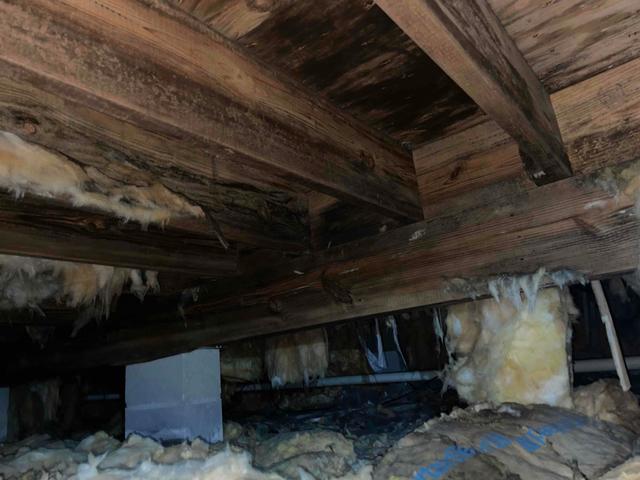
Mold and Mildew Growth
Mold growth has formed on the floor joists of this crawl space, which can happen on any organic materials when the relative humidity reaches over 60% during warmer temperatures. The musty odors and mold spores can often make their way up into the home, irritating those with allergies and asthma.
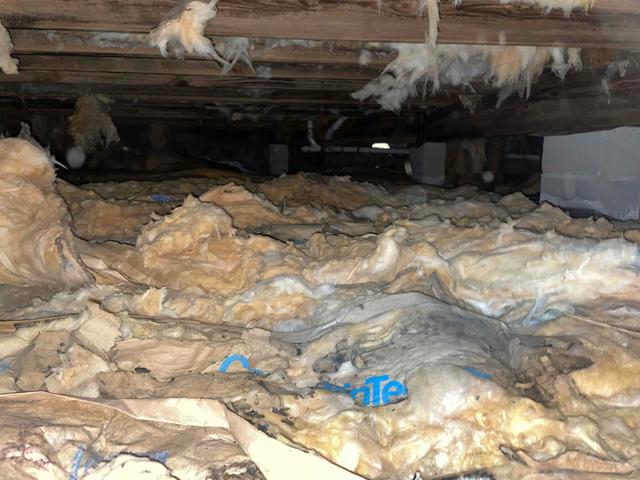
Falling Fiberglass and Exposed Dirt Floors
The fiberglass insulation was scattered all over the crawl space floor in large chunks. Fiberglass will absorb any excess moisture in the crawl space, the water droplets will tear apart the fine glass fibers, and the insulation becomes too heavy and damp to sit between the floor joists. There are also exposed areas of the dirt floor, which are allowing moisture to rise up from the earth and affect the relative humidity and environment.
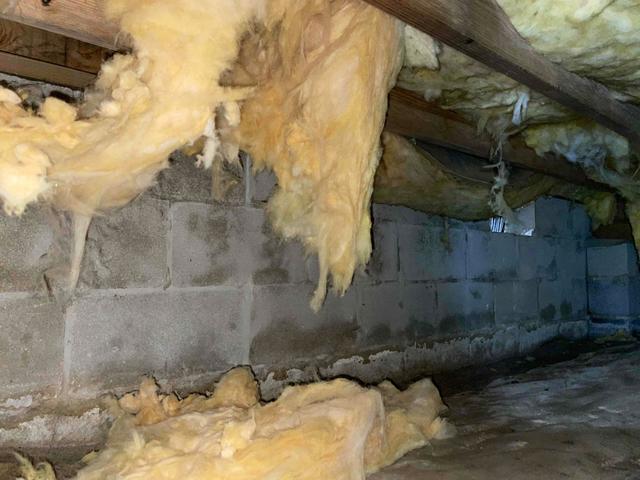
Efflorescence on Porous Foundation Walls
Efflorescence is visible on the foundation walls of this crawl space, which suggests that moisture is seeping through the walls, bringing along with it the inner salts and sediments to the surface, creating a powdery, chalky substance on the surface. Open vents lining these walls are also allowing outside air and moisture to freely enter the crawl space and raise the relative humidity.
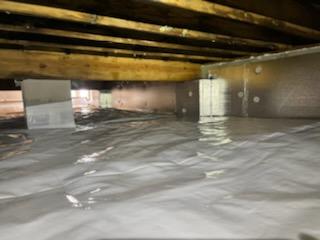
Mold Remediation on Floor Joists
We used an antimicrobial, called Shockwave, to eliminate the mold and mildew growth affecting the floor joists. This application will eliminate mold but does not remove any staining left behind from the growth. It is also important to note that mold and mildew can grow back if the relative humidity and temperature are not controlled.
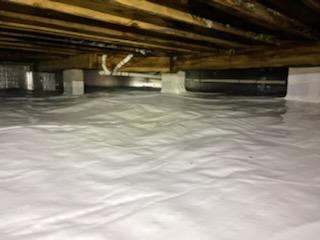
CleanSpace Vapor Barrier
We covered the dirt floors of the crawl space with a 10-mil vapor barrier, called CleanSpace Light. This vapor barrier is wrapped around all piers and mechanically fastened and sealed to the foundation walls six to eight inches above outside grade. This liner will help to protect the crawl space from moisture rising out of the earth.

Foamax Foam Board Insulation
We installed an inch and a half thick foam board, called Foamax, over the foundation walls of the crawl space. This will act as an air barrier and vapor retarder, protecting the crawl space from outside influence. The open vents lining these walls are not only covered by the Foamax, but they are internally covered with custom foam board pieces and sealed with can foam.

